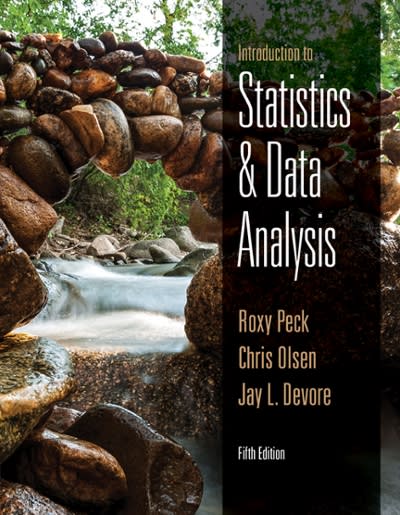12.9 The report Fatality Facts 2004: Bicycles (Insurance Institute, 2004) included the following table classifying 715 fatal...
Question:
12.9 The report “Fatality Facts 2004: Bicycles” (Insurance Institute, 2004) included the following table classifying 715 fatal bicycle accidents according to time of day the accident occurred.
Time of Day Number of Accidents Midnight to 3 a.m. 38 3 a.m. to 6 a.m. 29 6 a.m. to 9 a.m. 66 9 a.m. to Noon 77 Noon to 3 p.m. 99 3 p.m. to 6 p.m. 127 6 p.m. to 9 p.m. 166 9 p.m. to Midnight 113
a. Assume it is reasonable to regard the 715 bicycle accidents summarized in the table as a random sample of fatal bicycle accidents. Do these data support the hypothesis that fatal bicycle accidents are not equally likely to occur in each of the 3-hour time periods used to construct the table?
Test the relevant hypotheses using a significance level of .05.
b. Suppose a safety office proposes that bicycle fatalities are twice as likely to occur between noon and midnight as during midnight to noon and suggests the following hypothesis: H0 : p1 5 1/3, p2 5 2/3, where p1 is the proportion of accidents occurring between midnight and noon and p2 is the proportion occurring between noon and midnight.
Do the given data provide evidence against this hypothesis, or are the data consistent with it? Justify your answer with an appropriate test. (Hint: Use the data to construct a one-way table with just two time categories.)
Step by Step Answer:

Introduction To Statistics And Data Analysis
ISBN: 9781305445963
5th Edition
Authors: Roxy Peck, Chris Olsen, Jay L Devore






